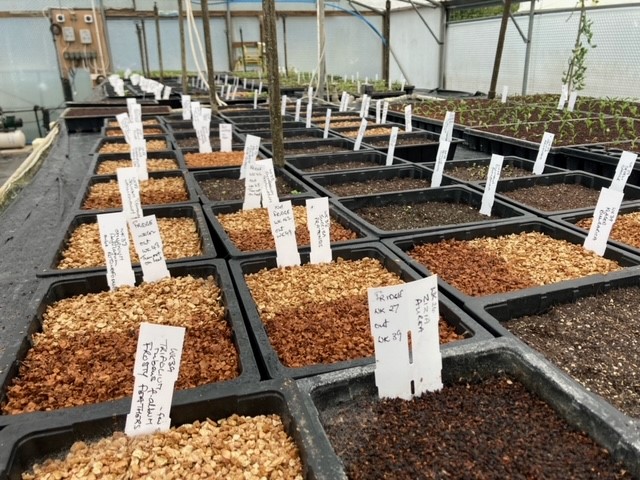The trouble with vermiculite
Vermiculite is widely used by professional and recreational gardeners. Our concerns over vermiculite's lack of sustainability, environmental and health impacts have led us to reconsider our use and look for other products which can do the same job.

What is vermiculite used for?
Vermiculite has been used by our propagation team to prevent mould and retain surface moisture for our seeds and cuttings.
Where does it come from?
Vermiculite in the UK tends to have come from South Africa.
How is vermiculite made?
Vermiculite is a “ hydrated magnesium aluminium silicate mineral which resembles mica in appearance.” (The Vermiculite Association). Found in rocks it is mined using open cast methods.
Following extraction and sorting vermiculite is exfoliated. This involves heating the vermiculite flakes to temperatures of 1000 degrees plus.
Extraction and sorting may happen in a different place to the exfoliation processes.
So what’s the problem?
As vermiculite comes from rocks it is a finite resource. It’s not sustainable.
The mining and extraction of vermiculite effects the local ecology. While manufacturers take care to minimise the impact of open cast mining on air and water quality, the act of removing vegetation, soil and rock severely degrades the landscape.
And although manufacturers take steps to restore the landscape once the mining has stopped. It can take many years for the landscape to return to a pre-mined state. In some cases the ecology never recovers.
The mining, extraction, processing and transportation of vermiculite requires significant amounts of energy. All of which contribute to carbon emissions.
For those involved in the mining and processing of vermiculite, exposure to quartz during the process can result in silicosis of the lungs.
What’s the alternative?
Here at Hardy’s we’ve been trialling the use of ground cork as an alternative to vermiculite.
Cork trees will regrow once stripped, meaning it’s a sustainable product.
It takes less energy to manufacture, process and transport cork from the manufacturers, mainly in Portugal to the UK. Carbon emissions associated with this product are lower.
But those working in the cork industry still need to protect themselves against inhaling cork dust which has been linked to respiratory illnesses.
Initial results suggest that a sprinkling a layer of cork over our seeds and cuttings is as effective as vermiculite in preventing mould and retaining surface moisture. We’re also trialling using a larger grade cork in our propagation house.
